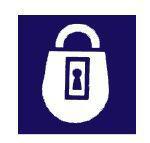SAS Urban Survival Handbook (38 page)
Read SAS Urban Survival Handbook Online
Authors: John Wiseman
Tags: #Health & Fitness, #Reference, #Survival, #Fiction, #Safety, #Self-Help, #Personal & Practical Guides, #General, #Survival Skills

ALCOHOL
There is some form of alcohol in every home—either in the ‘drinks’ cupboard or in perfumes, aftershaves, surgical spirit. In small amounts, it may be present in many aerosols, window and glass cleaners and cosmetics.
As a drink, in most countries, it is socially acceptable and pleasant—in moderation. Alcohol is NOT, as many people think, a stimulant—it actually depresses the nervous system. Alcohol IS a poison. It damages the body. In particular, it affects the brain, liver, heart and stomach. It can be very ‘addictive’ or lead to dependency. Externally, contact with alcohol in various products can lead to dermatitis.

WARNING
Milk tends to delay the effects of alcohol (especially the drowsiness) but, contrary to popular belief, coffee (caffeine) does NOT reverse the effects of alcohol. Drinking coffee will NOT make it safer to drive or operate machinery.
WHAT ALCOHOL DOES
Alcohol causes different effects in different individuals, but most of the following (to some degree) in everyone—when taken to excess: reduction in coordination and control of muscles, and problems with reasoning, judgement and vision. It’s immediately easy to see why alcohol is related to so many accidents. The ‘drinker’ is probably the worst judge of what is good for him or her once affected.
The heart rate is increased. There may be dehydration, depression or ‘manic’ episodes. Although you may look ‘flushed’ and warm, there is a significant decrease in body temperature—which could be very serious (when swimming for example).
When alcohol is taken to excess, the poisoning can lead to unconsciousness, kidney and liver damage, heart disease or failure, gastric ulcers, impotence, impaired brain and nerve functioning and death. Other side effects include raised blood pressure, obesity and severe depression.
LOOK AT THE FACTS
REMEMBER
It is not compulsory to drink. It is definitely not compulsory to drink to excess. If you don’t want a drink, when offered, say ‘no’. Social pressure often makes refusal difficult—but it is YOUR decision.
Alcohol is a very major cause of death by poisoning in adults, not just by ‘drinking and driving’. Poisoning does not always lead to death, but is more likely to in conjunction with drugs. Alcohol ranks in the highest category of
risks, with toxic fumes and exposure to gases, such as carbon monoxide. A large proportion of violent crimes are alcohol related.
One study shows that 50% of deaths in people under 25 are alcohol related. Teenagers regularly over-consume—leading to poisoning.
In children, alcohol ranks amongst the top causes of accidental poisoning, too—with turps/white spirit, disinfectants, pesticides (rat poison, for instance) and bleaches. Nearly ALL children over ten, especially boys, will have tried alcohol—knowingly. Young children will help themselves (more innocently) given the chance.
BAD COMBINATIONS
Mixing alcohol with some other substances can increase dangers. Great care should be taken with all drugs, and medications such as: anti-histamines, sedatives, anti-depressants, tranquillizers—even aspirin and codeine. The effects of these combinations may not be immediate—they may not show for several drinks.
MAJOR RISKS
- ■
Never combine alcohol with drugs of ANY sort - ■
NEVER mix alcohol with breathing the fumes of a solvent - ■
NEVER (do you NEED to be told?) mix alcohol with driving or the operation of machinery—at home or work - ■
NEVER mix alcohol with swimming—quite apart from the risk of drowning, both lower your temperature. This heat loss may be fatal - ■
Pregnant women run an increased risk of foetal abnormality—especially if drugs are also taken

WARNING
When a child swallows alcohol, or products containing alcohol, the level of sugar in the blood may drop abruptly—risking hypoglycaemia. First-aid treatment should always include giving the child a spoonful of sugar or a sweet drink.
PRECAUTIONS
Store all products containing alcohol where children cannot reach them. DON’T allow children to play with perfumes, aftershaves or any household product. NEVER store alcoholic drinks where children or anyone else who may be at risk may be able to get at them (see
Safe storage
).
▶ IF YOU THINK THAT YOU, OR SOMEONE YOU KNOW, MAY HAVE A PROBLEM WITH ALCOHOL—SEE HEALTH
TYPES OF HAZARD
Chemicals may be hazardous in a wide variety of ways. Obviously the toxicity of the chemical/substance is an important factor in judging risks—but it should be possible to avoid exposure to many unnecessary dangers. For SUBSTANCE ABUSE see HEALTH.
Inhalation
Chemicals in powder form, in smoke, in fumes and vapours and sprays all enter the system by the nasal membranes and the lungs—both are routes for rapid absorption into the blood and tissues. Proper ventilation and breathing protection are obviously essential, especially during DIY of any sort. Inhalation may also lead to ‘aspiration pneumonia’—inflammation of or fluid in the lungs—and various forms of cancer.
Ingestion
Although ingestion may be deliberate, it usually occurs in adults from mislabelled containers and confusion. Children seem to put everything in their mouths! Care must always be taken when handling chemicals to avoid hand-to-mouth contact—NO eating, drinking or smoking.
Hygiene is important—scrub hands, especially under the fingernails. NEVER use chemicals of any sort where food is prepared or stored.
Don’t store chemicals and preparations in a ‘shambles’, increasing the risk that the wrong substance may be drunk—or given to a sick child in the middle of the night.
Absorption
Absorption through the skin (or broken skin) is a very real danger. The chemical does not need to be liquid to be absorbed. Often, warnings on products are inadequate or unclear regarding the irritant properties of chemicals. Rubbing and scratching the area should be avoided. Always wear gloves (which should be either washable or disposable) and cover up as much skin as possible. Washing is important after contact.
Fire/explosion
If the label says ‘no naked flames’—TAKE NOTICE! Fire and explosion are a risk with many chemicals, especially alcohols and solvents, and also with fumes and dusts produced when working. Fire and explosion may lead to some of the other forms of poisoning. ‘Safe’ plastics in the home—the foam in some soft furnishings or the PVC covering on flexes and cables, for instance, produce deadly fumes when burnt. Great care should be taken when having bonfires.
Store flammable substances away from all sources of heat—even sunlight. This does not necessarily mean that they may burst into flames, but chemical changes may take place which could be dangerous. Most very flammable substances may have a ‘flashpoint’—a temperature above which they become particularly unstable. Store and use BELOW the flashpoint temperature.
Caustic burns
Many chemicals cause burns to the skin, soreness or damage to the eyes and internal burns. Chemicals do not have to be in liquid form to be dangerous. Burning of the skin, mouth, throat and stomach may lead to rapid absorption into the body.
REMEMBER
Chemicals in the home represent other dangers too. They may be misused in a variety of ways—many of which could be avoided with safe storage or not having chemicals in a home where there is particular risk. Keeping some chemicals may be foolhardy where there are children, old people, blind or poor-sighted people—or when there is a risk of substance abuse (see HEALTH), suicide, arson and vandalism.
Types of poisoning
Poisoning may be
acute
or
chronic
. It may be accidental—through inadequate warnings on the product, misunderstanding warnings or just not comprehending how dangerous a product is. Self-inflicted poisoning may occur through long-term use of over-the-counter medicines. It may also be deliberate—all manner of household products and drugs are used in attempts at suicide.
Acute poisoning
occurs in a fairly short time, usually by ingestion (swallowing). With most household products the risks are low, unless a fair amount of a substance is ingested—children/infants and elderly people are obviously at greater risk. But all cases of acute poisoning should be treated as medical emergencies.
Chronic poisoning
is the gradual accumulation of chemicals in the body. The body may have no way of eliminating these chemicals—particularly in the case of babies and small children, whose systems are not fully developed.
Some poisons will immediately be dangerous to everyone. Other, subtler poisons will cause different effects in each individual. People susceptible to allergies, eczema, migraine or asthma may be particularly sensitive—and should take extra precautions.
Sensitivity may be ‘acquired’. For instance, you might suffer no ill effects from contact with a product which has a warning that it may cause dermatitis. After using for a long period of time, you may develop a sensitivity.
People who take tranquillizers or sleeping tablets should avoid all contact with solvents, or fumes or vapours of solvents (see
Solvents in the home
). Other drugs may also affect the way the body deals with toxic substances. If you are receiving any medication, ask the doctor/pharmacist if a bad reaction or weakened resistance to any substance is a possible side effect.
High risk groups
Children under four
are most at risk from accidental poisoning. They don’t understand danger, can’t read labels, put a lot of things in their mouths. They will often sample substances which don’t look or smell at all pleasant. The younger the child, the less their physical ability to cope with poisons.
Pregnant (and breast-feeding) women
should take extra care. The foetus or baby can be harmed in many ways by drugs, alcohol—almost any chemical or over-the-counter medicine. Some, such as solvents, find their way into breast milk.
Haemophiliacs
may need to pay extra heed to ‘caustic’ warnings on products. Even aspirin can cause internal bleeding in some people.
The blind
and poor-sighted should be given help to label, store and identify products.
The elderly
may be unable to read warning labels, may forget having taken medicine and take an extra dose, may be unable to count or hold small pills, may get confused and accidentally mix dangerous products. Dosages and maximum periods of over-the-counter medicines should be reduced, since their bodies will not process chemicals so efficiently.
REMEMBER
DIY enthusiasts, gardeners and anyone who looks after a home may believe that the chemicals they use—such as paints, paint strippers, drain clearers, solvents, pesticides—are in special weak ‘domestic’ concentrations. Because these products are sold for home use, surely they must be ‘safe’? This is often quite WRONG. Many ‘industrial strength’ products are common in the home.
SAFE STORAGE
 The first objective is to store EVERYTHING out of the reach of young children and infants. That means all really nasty things like rat poison, paints and DIY chemicals, solvents, drain clearers should be locked away—out of the home if possible, in a garage/shed.
The first objective is to store EVERYTHING out of the reach of young children and infants. That means all really nasty things like rat poison, paints and DIY chemicals, solvents, drain clearers should be locked away—out of the home if possible, in a garage/shed.
